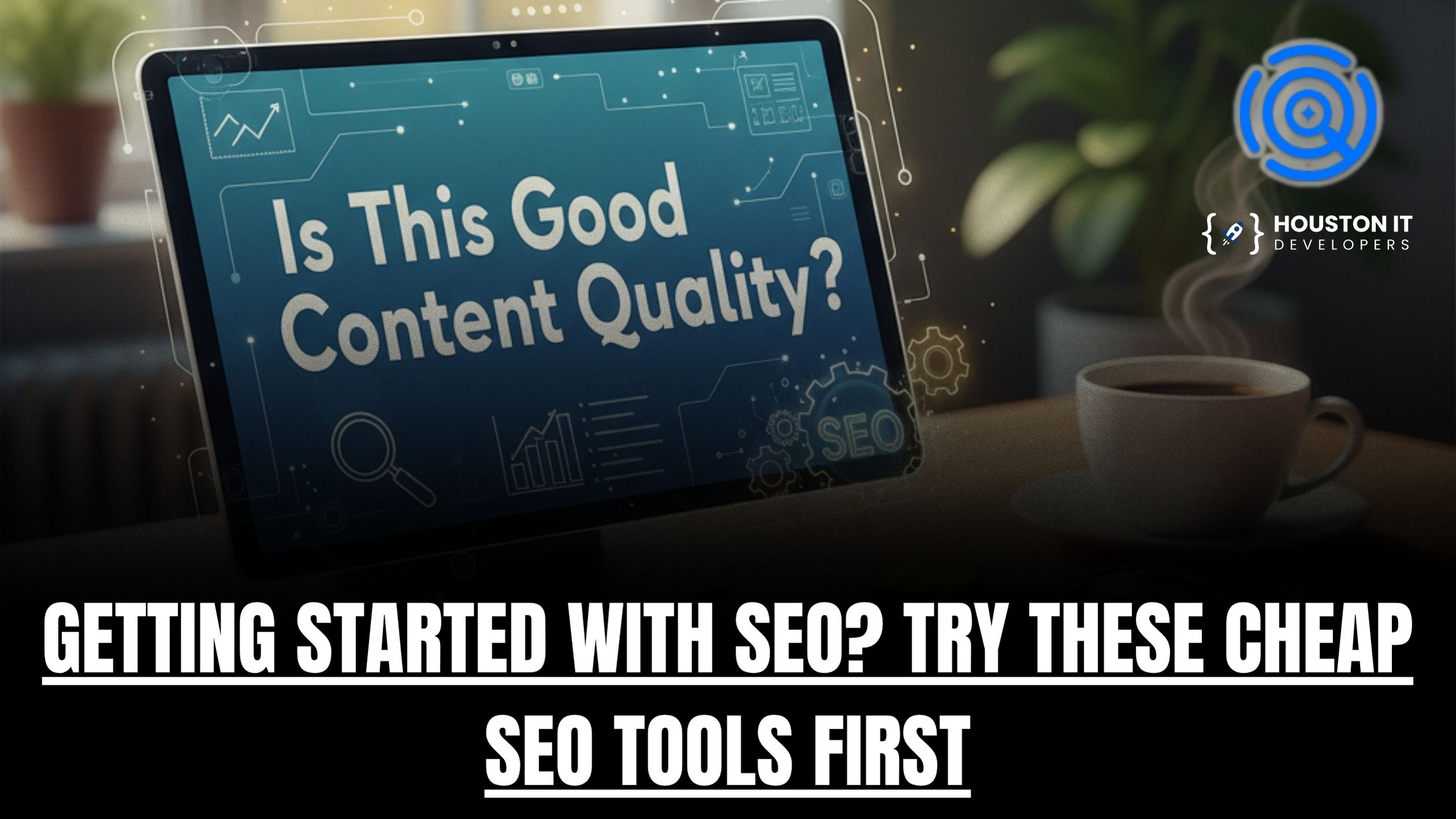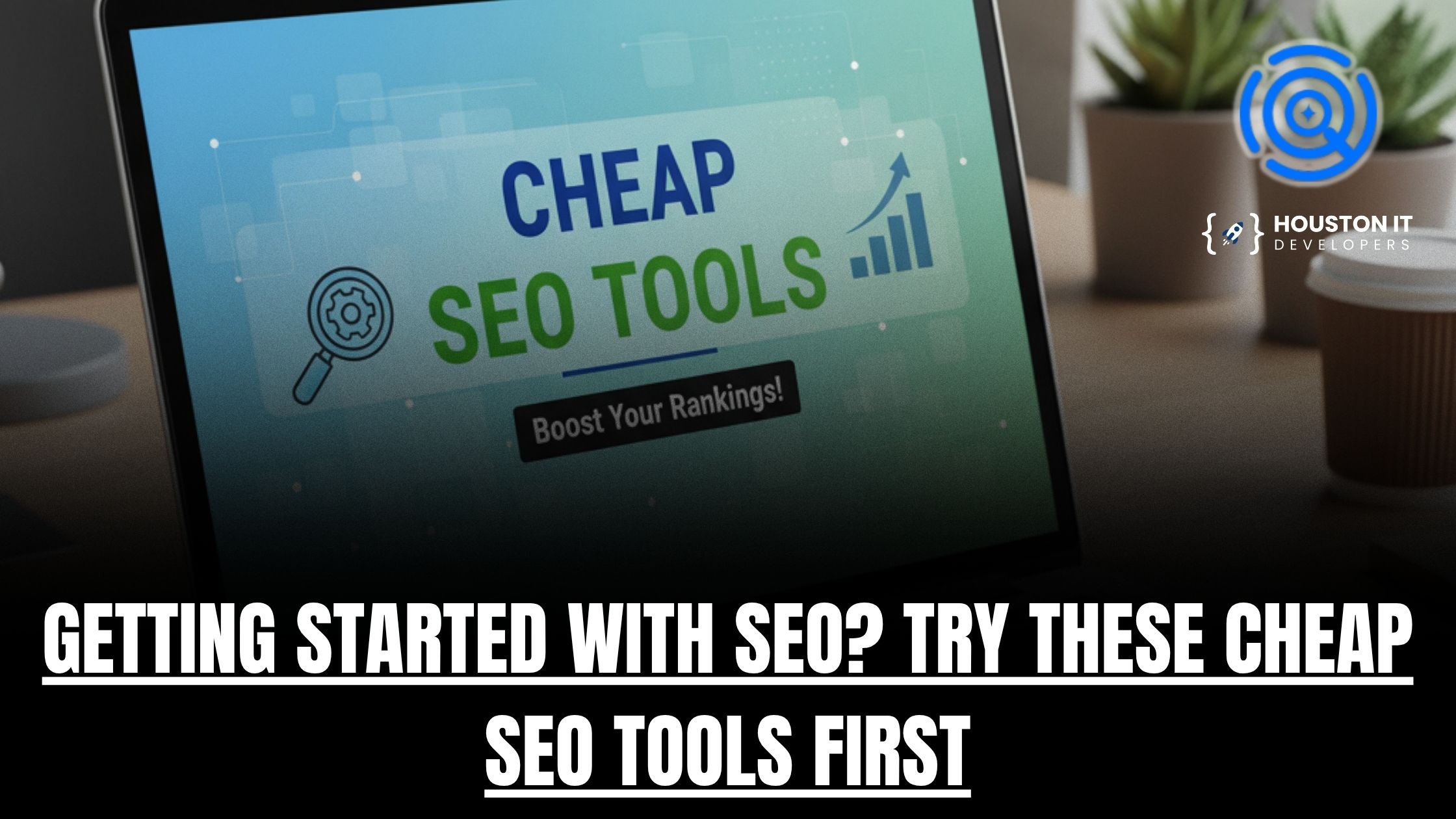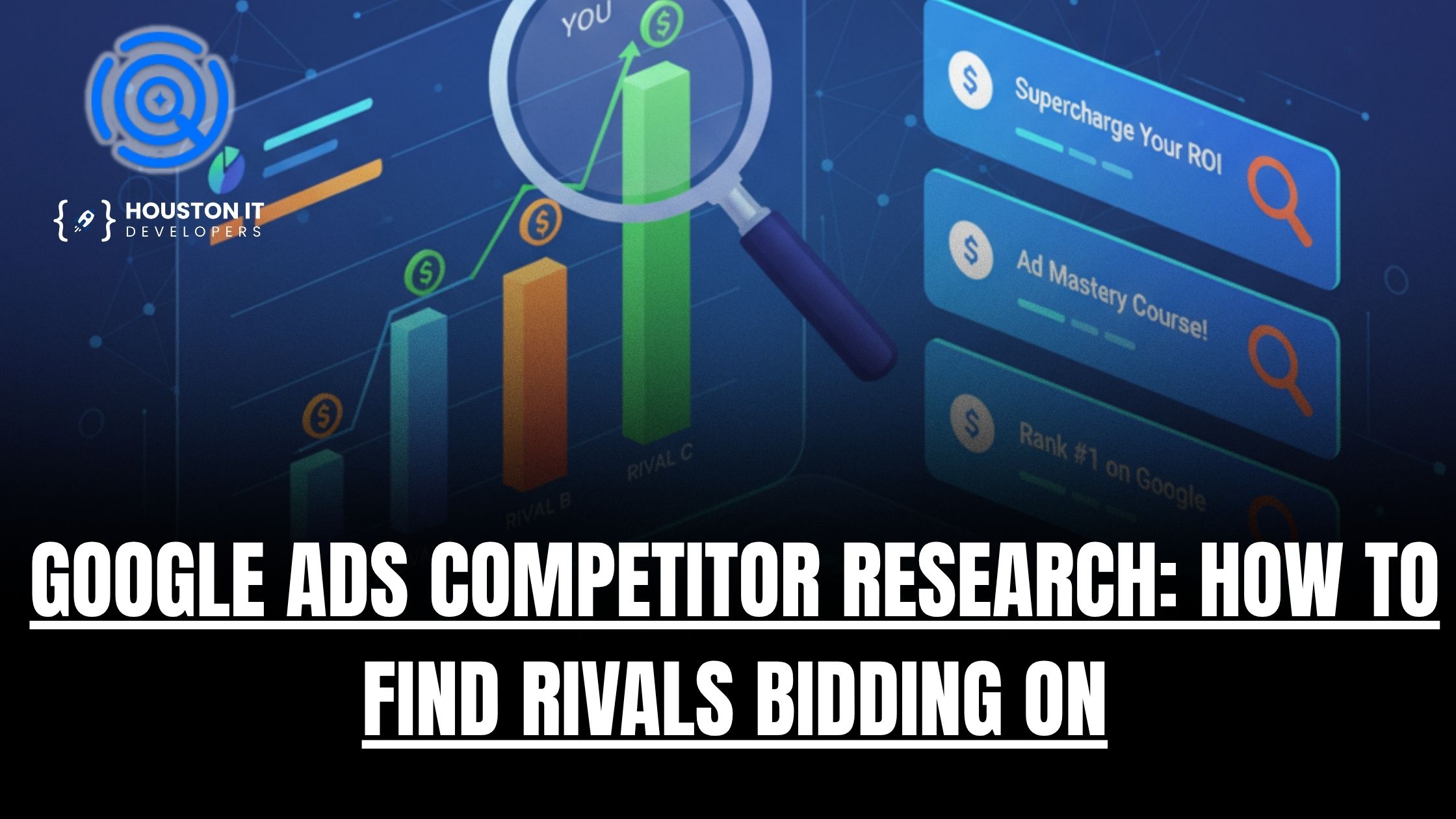Did you know that 44% of companies use SEO as part of their marketing strategy, and 74% of small businesses plan to invest in it? With increasing competition, simply having a website isn’t enough—you need a solid on-page SEO strategy to rank higher and attract traffic.
Search engines constantly update their algorithms, prioritizing user experience, content relevance, and technical optimization. If your website isn’t keeping up with the latest on-page SEO best practices for 2025, you risk losing visibility and potential customers.
In today’s blog post, we’ll walk you through a 10-step on-page SEO checklist to improve your rankings, boost engagement, and optimize your website for 2025 and beyond. From title tags and URL structures to page speed and schema markup, these on-page optimization tips for 2025 will help you stay ahead of the competition.
1. Optimize Your Title Tags and Meta Descriptions
Title tags and meta descriptions are essential components of any on-page SEO checklist. They not only help search engines understand your content but also impact click-through rates (CTR). A well-optimized title tag can make the difference between a user clicking on your page or choosing a competitor’s result.
Best Practices for Title Tags and Meta Descriptions in 2025:
- Include your primary keyword naturally at the beginning of the title tag to improve relevance.
- Keep title tags under 60 characters to ensure they display properly in search results.
- Write compelling meta descriptions (150-160 characters) that summarize your content while encouraging users to click.
- Use unique titles and descriptions for each page to prevent duplication and strengthen your on-page SEO strategy 2025.
- Incorporate action-oriented language in meta descriptions to boost engagement and drive traffic.
Optimizing these elements is a fundamental part of on-page SEO best practices 2025. A well-crafted SEO checklist should always prioritize title tags and meta descriptions, as they contribute to better rankings and increased organic traffic. Following these on-page optimization tips 2025 will set your website up for long-term success.
2. Use Header Tags Properly for Content Structure
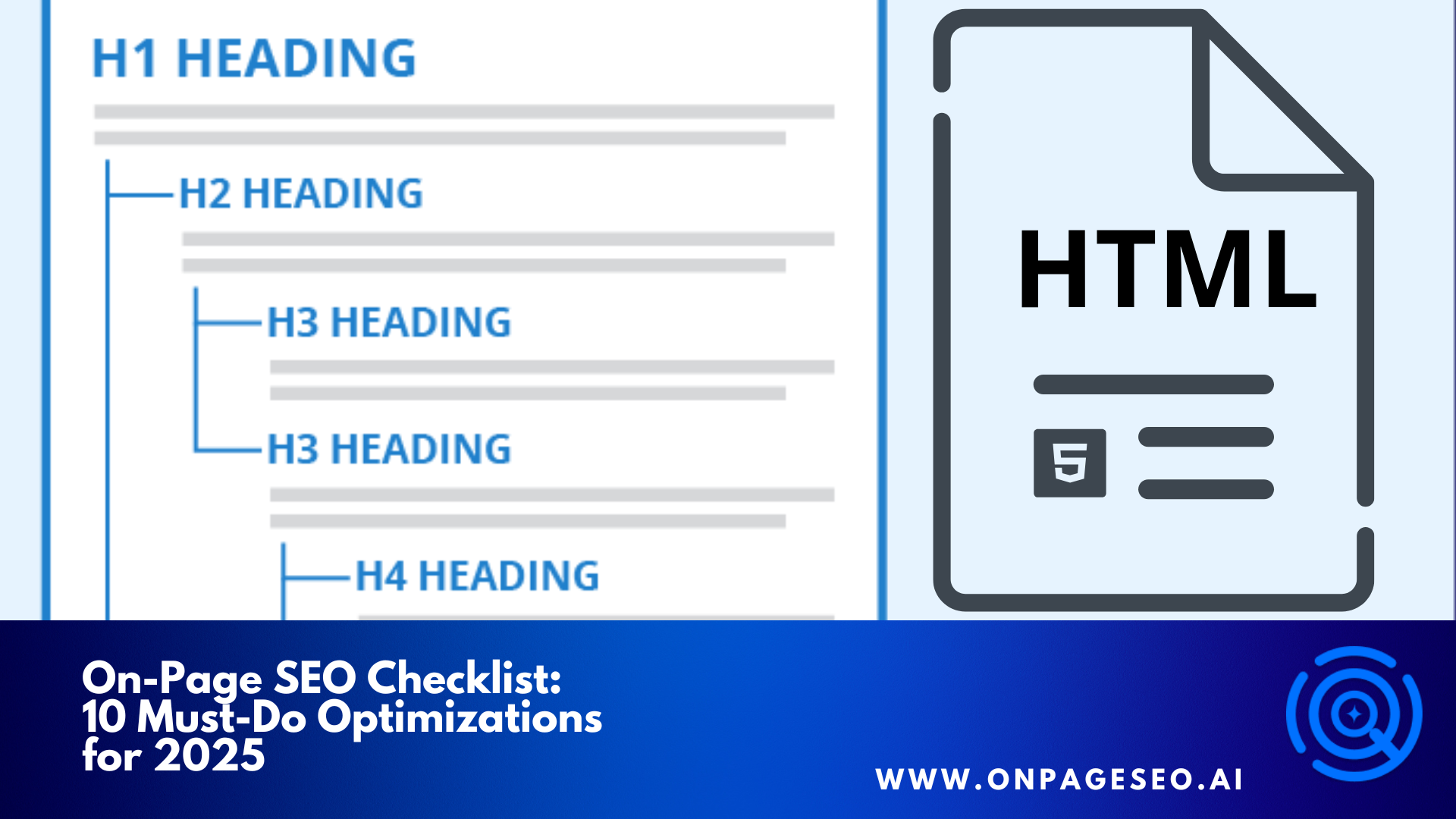
Proper use of header tags (H1, H2, H3, etc.) is a crucial aspect of any on-page SEO checklist. Headers improve readability, enhance SEO, and make it easier for search engines to understand the structure of your content. A well-organized page not only helps search engines rank your content accurately but also improves the user experience by making it more scannable and engaging.
Here are some on-page SEO best practices for header tags:
- Use one H1 tag per page, clearly defining the main topic. This helps search engines and users instantly understand what your page is about.
- Organize subtopics with H2 and H3 tags to create a logical structure, making it easier for readers to navigate your content.
- Naturally include keywords in headers to improve on-page SEO without keyword stuffing. Ensure they fit organically within the content.
- Break up long sections of text with headers to improve readability and scannability, which keeps visitors engaged for longer.
How Header Tags Impact SEO and User Experience
Properly structured header tags do more than just format your content—they enhance both SEO and readability. By using headers strategically, you make your content more digestible for users while helping search engines better understand its relevance.
The table below outlines the key functions and best practices for different header tags:
| Header Tag | Purpose | Best Practices |
| H1 | The main topic of the page | Use only once and include the primary keyword |
| H2 | Major content sections | Breaks content into clear, logical categories |
| H3 | Subsections under H2 | Provides additional context and supports H2 topics |
| H4-H6 | Further breakdown of content | Useful for complex topics, FAQs, and lists |
Following these on-page SEO best practices 2025 ensures that your content is structured effectively, aligning with on-page SEO strategy 2025. Proper header usage is a key part of 10 on-page SEO optimizations, helping both users and search engines navigate your content effortlessly.
3. Improve URL Structure for Better SEO
A well-optimized URL structure is a fundamental part of any on-page SEO checklist. Clean, descriptive URLs improve user experience, enhance search engine crawling, and contribute to better rankings. When URLs are concise and keyword-rich, both search engines and users can easily understand the page’s content.
Follow these on-page SEO best practices 2025 to ensure your URLs are effective:
- Keep URLs short, descriptive, and keyword-rich (e.g., yourwebsite.com/on-page-seo-checklist-2025). This makes them easier to read and improves SEO.
- Use hyphens (-) instead of underscores (_) or spaces, as search engines recognize hyphens as word separators.
- Avoid unnecessary parameters, numbers, or special characters that don’t add value (e.g., ?id=12345).
- Maintain a consistent URL structure across your website to improve navigation and indexing.
A poorly structured URL can negatively impact your on-page SEO strategy 2025 in several ways. Lengthy, unclear URLs with unnecessary parameters can confuse search engines, making it harder for them to crawl and index your pages properly. Additionally, URLs filled with random numbers, special characters, or missing keywords fail to provide context, reducing click-through rates.
If users find a URL difficult to read or remember, they may be less likely to trust or revisit your site. By avoiding these pitfalls and implementing an SEO checklist for URL optimization, you can improve both search rankings and user experience.
4. Optimize Images with Alt Text and Compression
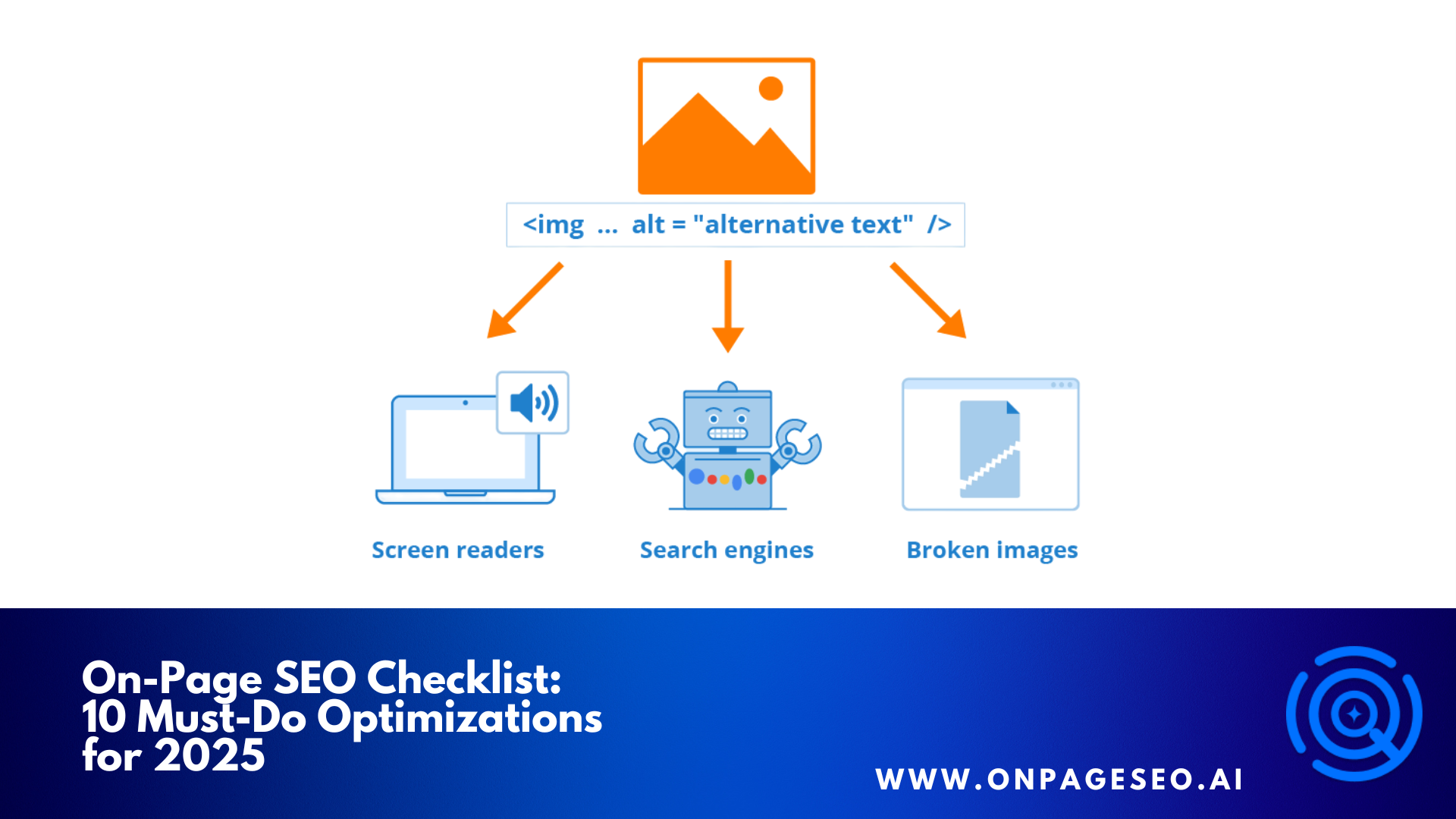
Images play a crucial role in content engagement, but if not optimized, they can slow down your site and negatively impact your on-page SEO checklist. Search engines prioritize fast-loading pages because page speed is a ranking factor. Unoptimized images can increase load times, leading to higher bounce rates and lower rankings. Proper image optimization not only enhances on-page SEO best practices 2025 but also improves accessibility for visually impaired users by providing descriptive alt text.
Here are the necessary On-Page SEO Checklist for image optimization:
- Use descriptive alt text: Include relevant keywords naturally to improve both accessibility and SEO.
- Compress images: Use tools like TinyPNG or ShortPixel to reduce file size without sacrificing quality.
- Choose the right format: Use JPEG for photos, PNG for transparent images, and WebP for faster loading.
- Enable lazy loading: This ensures images load only when needed, improving site speed.
By following these on-page SEO strategy 2025 tips, you enhance your website’s performance, user experience, and search rankings. A well-optimized image strategy contributes to better crawling, indexing, and overall visibility, making it a vital component of your website optimization checklist.
5. Write High-Quality, Keyword-Optimized Content
In on-page SEO best practices 2025, content optimization goes beyond simple keyword insertion. Google’s machine learning models, like BERT and MUM, now analyze content for contextual relevance, entity relationships, and user intent. This means search engines prioritize well-structured, information-rich content that directly answers queries while maintaining a natural flow.
Here are the content optimization strategies for 2025:
- Strategic Keyword Placement: Use the primary keyword in the H1, first 100 words, and conclusion. Integrate supporting keywords in subheadings (H2, H3) and naturally throughout the text.
- Semantic SEO & Topical Authority: Expand beyond primary keywords using NLP-friendly language. Google understands synonyms, related terms, and co-occurring words, so optimize with LSI keywords and structured data (FAQ schema, How-To schema).
- Search Intent Matching: Classify content based on informational, navigational, or transactional intent. Use SERP analysis tools like Frase or Surfer SEO to refine topics based on user needs.
- Content Depth & EEAT Compliance: Write in-depth, authoritative content that demonstrates Experience, Expertise, Authoritativeness, and Trustworthiness (EEAT). Cite credible sources and structure content to provide real value.
- Readability & UX Optimization: Use concise paragraphs, bullet points, and bold formatting to improve scannability and engagement metrics (dwell time, bounce rate).
Implementing these on-page SEO best practices for 2025 ensures higher rankings, better user engagement, and increased conversions while reducing bounce rates. To take optimization even further, explore how AI can enhance your strategy in this in-depth guide on AI-driven on-page SEO.
6. Enhance Internal Linking for Better Navigation
A well-structured internal linking strategy is crucial for both search engine crawlers and user experience. When done correctly, it improves site architecture, enhances topical relevance, and distributes PageRank (link equity) across your website. Google’s crawlers follow internal links to discover, index, and understand the relationship between pages.
A poor internal linking structure can leave important pages unindexed or deprioritized in rankings, directly impacting your on-page SEO strategy 2025. To help you avoid that, here are the best internal linking practices:
- Use keyword-rich, descriptive anchor text: Instead of generic phrases like “click here”, use meaningful text that provides context, such as “on-page SEO checklist for 2025”. This helps both users and search engines understand the destination page’s relevance.
- Create a logical content hierarchy: Link from high-authority pages (such as pillar content) to deeper, related pages. This strengthens topical authority and ensures an efficient crawl budget allocation.
- Eliminate orphan pages: Pages without inbound internal links are harder for Google to discover and rank. Ensure every important page is linked to at least once.
- Prioritize user experience: Avoid excessive linking within content—each link should serve a navigational or informational purpose.
While internal linking strengthens on-page SEO, backlinks (external links from other websites) significantly impact off-page SEO. High-quality backlinks signal trust and authority, helping your pages rank higher. A balanced internal and external linking strategy creates a stronger overall SEO framework.
7. Optimize for Mobile-Friendliness and Core Web Vitals
With Google’s mobile-first indexing, optimizing for mobile is no longer optional—it’s a necessity for on-page SEO strategy 2025. Search engines primarily crawl and rank the mobile version of your site, making mobile usability and performance critical ranking factors. Poor mobile experience leads to higher bounce rates, lower dwell time, and reduced engagement, all of which negatively impact SEO.
How to Optimize for Mobile and Core Web Vitals
- Implement responsive design: Your website must adapt to different screen sizes and resolutions seamlessly. Use flexible grids, scalable images, and CSS media queries to ensure a smooth user experience.
- Enhance Core Web Vitals performance: Optimize:
- Largest Contentful Paint (LCP): Reduce loading time for the largest visible element to under 2.5 seconds. Compress images, enable lazy loading, and use a Content Delivery Network (CDN).
- First Input Delay (FID): Ensure interactive elements (buttons, links) respond within 100 milliseconds by minimizing JavaScript execution time.
- Cumulative Layout Shift (CLS): Prevent sudden layout shifts by defining image dimensions and avoiding dynamically injected content.
- Improve mobile usability: Use legible fonts, accessible buttons, and adequate spacing to ensure smooth touch interactions.
- Limit intrusive pop-ups: Excessive interstitials disrupt the user experience and may lead to ranking penalties.
Google prioritizes mobile-friendly websites, making these optimizations essential for achieving higher rankings, better user engagement, and lower bounce rates in 2025.
8. Implement Schema Markup for Rich Snippets
Schema markup is a structured data format that helps search engines better understand and display your content in enhanced search results. By adding schema markup, you can enable rich snippets that showcase additional information like ratings, FAQs, and breadcrumbs, improving click-through rates (CTR) and SEO rankings.
In 2025, implementing structured data is a critical part of your on-page SEO checklist to stay ahead in the search landscape. To give you more idea, here are On-page optimization tips for schema markup:
- Use FAQ schema: This allows search engines to display questions and answers directly in search results, increasing visibility and engagement.
- Implement review schema: If you have products, services, or articles, adding star ratings and user reviews helps attract more clicks.
- Apply organization schema: Clearly present business details like name, logo, contact information, and social profiles, improving brand authority.
- Use breadcrumb schema: This enhances site navigation visibility in search results, making it easier for users and search engines to understand your website structure.
- Include article schema: For blogs and news content, this helps search engines categorize and display publication date, author, and headline in results.
Structured data enhances search visibility by making your pages more interactive and informative. Additionally, schema markup complements off-page SEO efforts by increasing engagement and credibility, indirectly improving your rankings.
Google and other search engines favor well-structured data, making schema markup a non-negotiable part of your website optimization checklist in 2025.
9. Improve Page Speed for a Better User Experience
A slow website disrupts user experience, increases bounce rates, and negatively affects SEO rankings. Google’s Core Web Vitals—Largest Contentful Paint (LCP), First Input Delay (FID), and Cumulative Layout Shift (CLS)—directly measure page performance and determine how well your site meets modern speed requirements.
If your site fails to meet these thresholds, it risks ranking lower than competitors with faster, optimized pages. Here are the technical strategies to improve page speed:
- Optimize Server Response Time (TTFB): Choose low-latency hosting with HTTP/2 or HTTP/3 support, reduce DNS lookup times, and implement server-side caching.
- Enable Brotli or GZIP Compression: Compress HTML, CSS, and JavaScript files to reduce file size without losing quality, speeding up load times.
- Leverage Full-Page Caching and Edge Computing: Use dynamic caching layers and CDN edge servers to serve content from locations closer to users, improving TTFB and LCP scores.
- Eliminate Render-Blocking Resources: Load critical CSS inline, defer non-essential JavaScript, and use asynchronous loading for third-party scripts.
- Implement Adaptive Image Delivery: Serve images in next-gen formats (WebP, AVIF) and use responsive image scaling via srcset to match different screen resolutions.
- Use HTTP Keep-Alive and Persistent Connections: Reduce the overhead of multiple HTTP requests by keeping connections open for multiple resource downloads.
A well-optimized page speed strategy enhances user experience, improves conversion rates, and strengthens SEO. Fast-loading websites tend to attract higher dwell time, lower pogo-sticking rates, and more backlinks—all of which reinforce domain authority and off-page SEO efforts.
10. Focus on E-E-A-T (Experience, Expertise, Authoritativeness, Trustworthiness)
Google’s E-E-A-T (Experience, Expertise, Authoritativeness, and Trustworthiness) is no longer just a recommendation—it’s a necessity for ranking well in 2025. With advancements in Google’s Search Quality Rater Guidelines and Helpful Content Updates, low-quality, AI-generated, or unverified content is being pushed down in rankings. Sites that lack credibility, transparency, or user trust risk lower visibility, particularly in YMYL (Your Money or Your Life) niches like finance, health, and law.
Advanced Strategies to Strengthen E-E-A-T in 2025
- Demonstrate First-Hand Experience: Google increasingly prioritizes content from real experts, meaning surface-level or AI-generated content won’t suffice. Add case studies, personal insights, and real-world applications to prove experience in your field.
- Implement Author Schema & Editorial Transparency: Use author schema markup to display credentials in search results. Ensure each article has a byline, bio, and linked social profiles to verify expertise. Sites without clear authorship risk devaluation in rankings.
- Leverage High-Authority Backlinks & Brand Mention: Unlinked mentions and backlinks from trusted domains (.gov, .edu, and industry leaders) serve as digital endorsements. Build authority through HARO (Help a Reporter Out), guest posts, and expert contributions in high-profile publications.
- Optimize Trust Signals & Security Features: Google assesses user trust based on signals like HTTPS encryption, transparent privacy policies, and clear refund policies for e-commerce sites. Sites with misleading ads or poor UX signals risk algorithmic demotions.
- Encourage Authentic Reviews & Social Proof: Google reviews, Google Merchant Center ratings, Trustpilot reviews, and industry-specific testimonials help establish legitimacy. Fake or excessive AI-generated reviews violate Google’s guidelines and can lead to penalties.
Mastering E-E-A-T not only strengthens your on-page SEO strategy but also boosts your organic visibility, giving you a sustainable edge in search rankings. To gain a deeper understanding of how E-E-A-T ties into overall SEO, it’s crucial to explore both technical SEO and content SEO strategies.
Optimize Your Website with the OnPageSEO.ai Chrome Extension

The OnPageSEO.ai Chrome Extension is a tool designed to streamline on-page SEO analysis directly within your browser. It provides insights into key SEO elements, helping users improve their content structure, metadata, links, images, and overall page health.
Here are the key features of the onpageseo.ai extension
On-Page SEO Analysis
The extension performs an instant on-page SEO audit, evaluating critical factors such as title tags, meta descriptions, header structure, and internal linking. It highlights potential issues and offers suggestions for optimization.
Title & Meta Description Optimization
Users can analyze title tags and meta descriptions for length, keyword usage, and relevance. The Pro version includes an AI-powered generator that suggests optimized metadata based on page content.
Header Structure Audit
A well-organized header structure improves readability and SEO. The extension provides a hierarchical view of H1-H6 tags, allowing users to identify missing or misused headings.
Internal & External Link Analysis
Effective linking improves navigation and distributes page authority. The extension identifies all internal and external links, analyzes anchor text usage, and highlights potential SEO issues.
Image SEO Insights
Images contribute to SEO performance but can slow down a site if not optimized. The extension reviews alt text, image formats, and load times, offering recommendations for improvement, including WebP conversion for better performance.
Keyword Analysis
Understanding keyword distribution helps with content optimization. The extension provides word count, keyword density, and phrase occurrence data, with export options for deeper analysis.
Google Search Console Integration (Pro Version)
The Pro version offers detailed insights from Google Search Console, providing performance data and AI-driven recommendations for each page.
The OnPageSEO.ai Chrome Extension is a valuable resource for improving on-page SEO performance efficiently. It is available in both a free and Pro version with additional features. The extension can be installed directly from the Chrome Web Store.
Final Thoughts About On-Page SEO Checklist
Mastering on-page SEO is essential for improving search rankings and driving organic traffic. By following this 10-step checklist, you can optimize your website for search engines while enhancing user experience. From crafting compelling meta tags to improving site speed and mobile responsiveness, every detail counts.
Now, it’s time to take action. Audit your site, apply these best practices, and monitor your progress. For a faster, smarter way to optimize your on-page SEO, try the OnPageSEO.ai Chrome Extension. It helps you analyze and improve your pages in real-time—no guesswork, just results.
Boost your rankings effortlessly. Download the OnPageSEO.ai Chrome Extension now!

